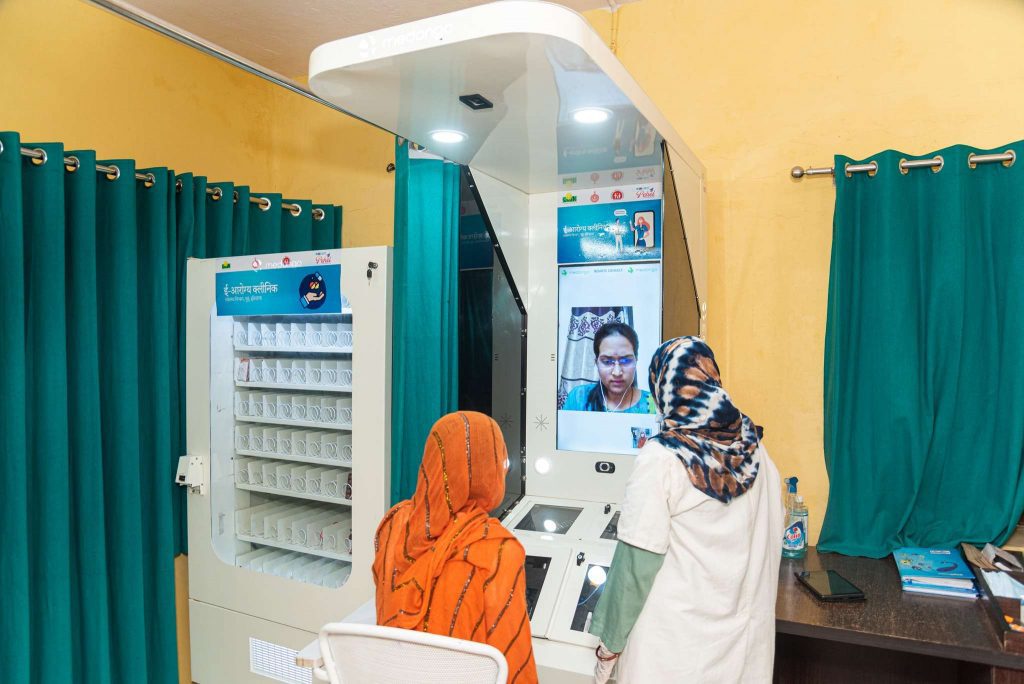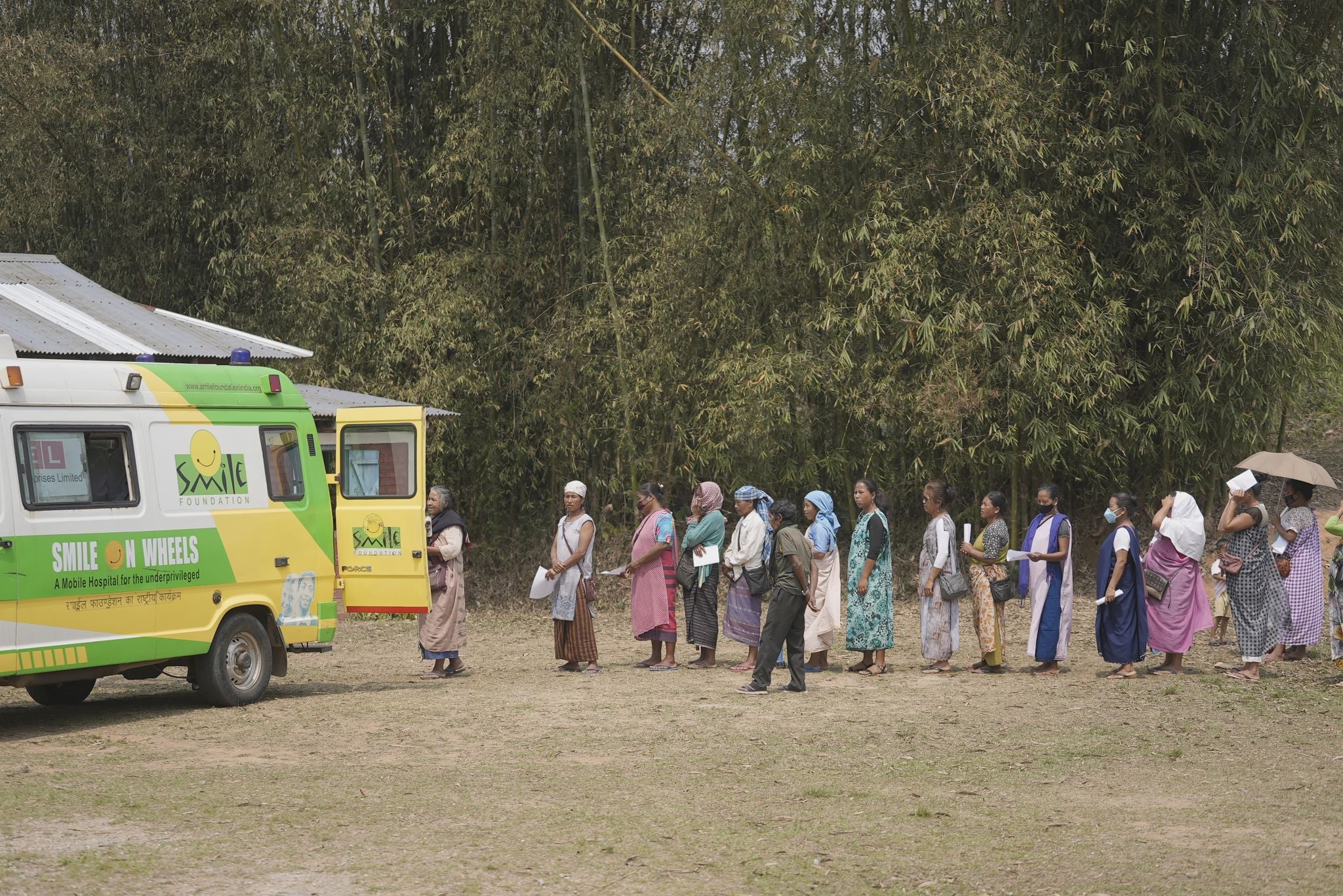Life is not only about survival, it is about flourishing in robust health. Yet, how many of us truly comprehend the core of well-being? Not many of us can readily obtain top-tier healthcare when necessary and afford the opportunity to lead genuinely healthy lives. Regrettably, in India, particularly in rural locales, the accessibility of superior healthcare remains a big concern, exacerbating the disparities in health outcomes across various regions. Thus, while the aspiration for a wholesome life is ubiquitous, the avenues to realise it are not uniformly accessible to all.
India being the most populous country in the world, its rural population constitutes a significant portion of its demographic landscape, with approximately two-thirds of the country’s population residing in rural areas. Many villages are located far from healthcare facilities, requiring residents to travel long distances to access medical care. They suffer from a shortage of healthcare infrastructure and healthcare professionals, including doctors, nurses and specialists. Providing adequate healthcare to rural India has been a challenge, as simply having physical hospitals is not enough to serve the large, dispersed population. Therefore, technology became essential in speeding up the healthcare access and improving healthcare in rural India became a necessity.
In 2017, the National Health Policy of India emphasised the importance of using technology, like telemedicine, to improve healthcare access and delivery across the country. Telemedicine is a key part of this strategy, aiming to expand digital infrastructure and promote remote healthcare services. As part of this effort, the government launched the National Telemedicine Service- eSanjeevani, allowing patients to consult healthcare providers remotely. This initiative enables individuals to receive medical advice and treatment without needing to visit healthcare facilities in person, thereby enhancing healthcare accessibility nationwide.
What do we understand about Telemedicine?
Telemedicine is a transformative approach to healthcare delivery that leverages technology to facilitate remote and rural medical consultations and services. Through telemedicine, patients can connect with healthcare professionals from virtually anywhere, utilising video conferencing, secure messaging platforms and other digital tools. It enables healthcare delivery without the need for in-person visits to healthcare facilities, making it particularly valuable in situations where physical access to healthcare services is limited or challenging, especially in rural India.
Telemedicine emerges as a transformative solution to bridge these gaps and improve healthcare accessibility for the underserved population. By leveraging technology, telemedicine offers cost-effective and efficient healthcare delivery, reducing the burden on physical healthcare facilities and enabling more patients to access medical care remotely.
Importance of Telemedicine in Improving the Healthcare System of India
- Telemedicine bridges the gap by allowing patients in rural India to consult with healthcare professionals located elsewhere, improving healthcare accessibility for underserved populations.
- The healthcare system of India faces challenges such as overcrowded hospitals, long wait times and shortages of healthcare professionals. Telemedicine helps alleviate these pressures by enabling healthcare providers to reach more patients efficiently and effectively, reducing the burden on physical healthcare facilities.
- Telemedicine is more cost-effective compared to traditional in-person consultations. This is especially beneficial for patients from low-income backgrounds who may struggle to afford healthcare expenses.
How Telemedicine is a Game-changer in Doctor-Patient Communication?
Telemedicine, the remote delivery of healthcare services through technology, is transforming doctor-patient communication, especially in the context of rural healthcare in India. With the pressing need for better healthcare access, telemedicine offers a promising solution by bridging geographical gaps and improving communication between doctors and patients. The impact of telemedicine on accessibility, convenience, continuity of care, patient engagement and cost-effectiveness is quite visible.
- Accessibility: Telemedicine breaks down barriers to access healthcare by allowing patients to connect with healthcare professionals remotely, without the need to travel long distances, particularly beneficial for those in rural or underserved areas.
- Convenience: Now patients can schedule appointments at their convenience. This convenience encourages more frequent communication between doctors and patients, leading to better management of chronic conditions and preventive care.
- Timely Consultations: Telemedicine enables timely access to healthcare. Patients can quickly connect with doctors for assessment and advice, potentially avoiding unnecessary delays in treatment and improving health outcomes.
- Continuity of Care: Telemedicine supports continuity of care by facilitating regular follow-up consultations. This ongoing communication between doctors and patients promotes better adherence to treatment plans, medication management and lifestyle modifications.
- Improved Patient Engagement: Telemedicine platforms often include features for secure messaging, video conferencing and electronic health record access, greater engagement between patients and healthcare providers.
- Enhanced Health Education: Telemedicine enables doctors to provide personalised health education and self-management strategies to patients, empowering them to take proactive steps towards improving their health. Promoting better health literacy and self-care practices.
- Reduced Healthcare Costs: By reducing the need for in-person visits and hospitalisations, telemedicine can lead to cost savings for both patients and healthcare systems.
Healthcare for all
By leveraging technology to bridge geographical gaps and enhance communication between doctors and patients, telemedicine addresses the challenges faced by the healthcare system of India. By offering healthcare services through its Telemedicine initiatives such as maternal care and child nutrition, health and hygiene and elderly healthcare Smile Foundation hopes to improve the overall well-being of rural people enabling them to lead healthier lives.
As India strives for universal healthcare coverage, telemedicine will continue to play an important role in ensuring that every individual receives the healthcare they deserve, irrespective of their location or socioeconomic status.









